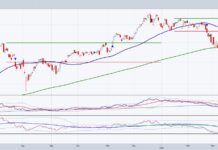 By Andrew Kassen Welcome to Non-Farm Payroll (NFP; a.k.a. “the monthly unemployment data) Friday! Excluding Central Bank rate decisions and the occasional errant twitter hack rumors of White House bombings, NFP ranks as the most widely anticipated economic release of the month. Released (almost always) on the first Friday of each month, NFP is akin to the Super Bowl of the economic calendar, with the time leading up to it replete with pre-game tailgating, services offering play-by-play coverage, statistical parsing of the game’s probable outcome and lots of sloppy betting before the kickoff.
By Andrew Kassen Welcome to Non-Farm Payroll (NFP; a.k.a. “the monthly unemployment data) Friday! Excluding Central Bank rate decisions and the occasional errant twitter hack rumors of White House bombings, NFP ranks as the most widely anticipated economic release of the month. Released (almost always) on the first Friday of each month, NFP is akin to the Super Bowl of the economic calendar, with the time leading up to it replete with pre-game tailgating, services offering play-by-play coverage, statistical parsing of the game’s probable outcome and lots of sloppy betting before the kickoff.
This NFP comes with an old, familiar twist in comparison to the several months preceding it: the release occurs in the wake of a recent slate of anemic US economic data; and this at a time when the Federal Open Market Committee is being more vocal about the timing of a pare-back in asset purchases (read: QE). In fact, in response to stubbornly sluggish labor conditions and some recent signs of disinflation, the FOMC’s policy statement on Tuesday included new language signaling “The Committee is prepared to increase or reduce the pace of its purchases [again, quantitative easing] to maintain appropriate policy accommodation as the outlook for the labor market or inflation changes” (see the full statement – minimally changed from March with the exception of this quote – here).
NFP for the month of April is forecast to come in at 146,000 jobs created v. 88,000 in March, with the headline rate remaining steady at 7.6%. Recent PMI employment indices and ADP have suggested a lower number, while weekly initial unemployment claims have been trending firmly lower, hitting their lowest rate in 5 years yesterday.
Given the highly fluid monetary policy backdrop, any surprises – especially a negative read for April, and/or negative revisions to previous months – may invite even greater volatility than is already typical. Consistent with the ongoing policy theme of our 4 year recovery, too little improvement (or backtracking) may invite market speculation of an increase in QE (or at least a delay in turning the tap off); which may be broadly market-positive. Oddly enough, by a similar token greater than anticipated improvement may elicit optimism the labor market is really turning a corner, amounting to a similar reaction.
Whether you sit this release out or seek to exploit its volatility: best of luck out there today.
Twitter: @andrewunknown and @seeitmarket
Author holds no positions in any securities mentioned at the time of publication.
Any opinions expressed herein are solely those of the author, and do not in any way represent the views or opinions of any other person or entity.







